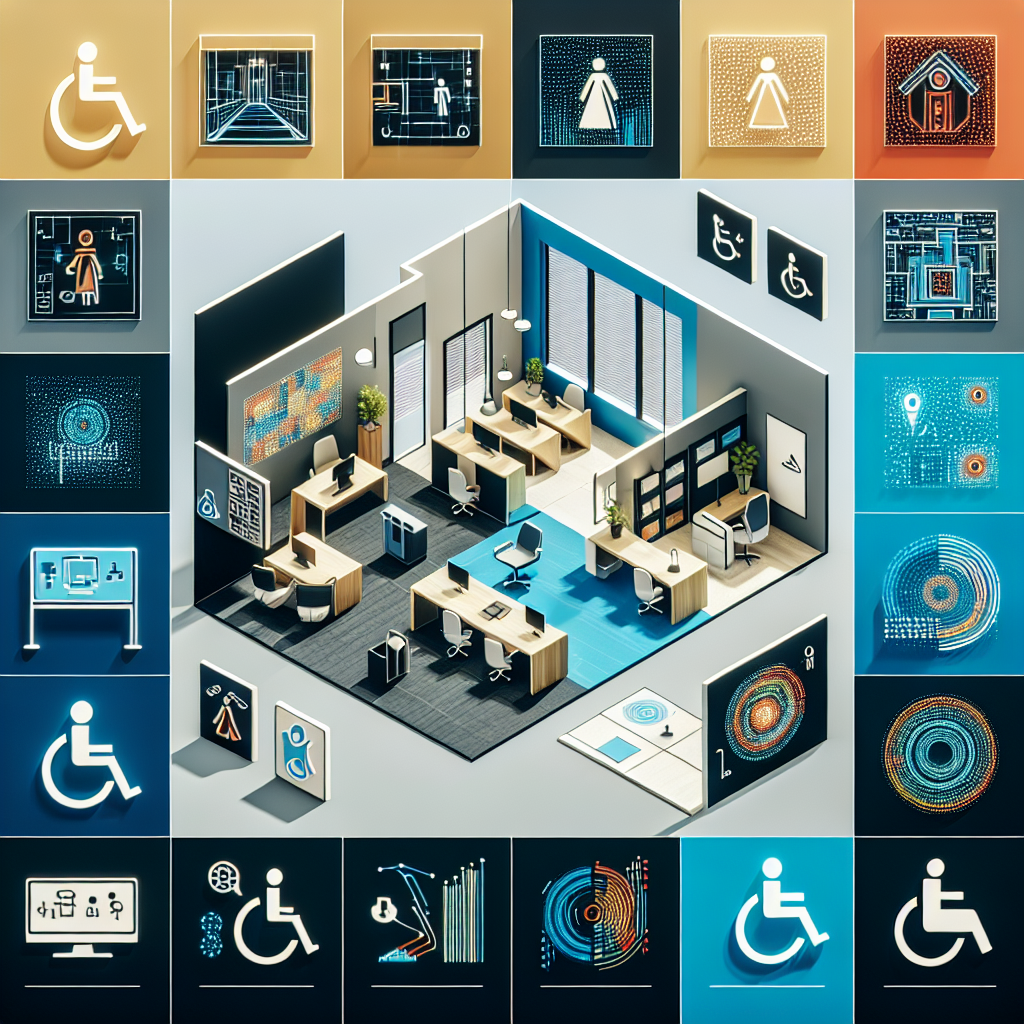Artificial Intelligence (AI) has been transforming various industries in recent years, including design. One of the most exciting applications of AI in design is its ability to create inclusive spaces. Inclusive design is a concept that aims to create products, services, and environments that are accessible to all, regardless of age, ability, or background. With AI-generated design solutions, designers can now create spaces that cater to the diverse needs of different individuals.
AI-generated design solutions for inclusive spaces involve the use of algorithms and machine learning to analyze data and generate designs that are inclusive and accessible. These solutions can help designers overcome challenges such as limited resources, time constraints, and lack of expertise in inclusive design principles. By leveraging AI technology, designers can create spaces that are not only aesthetically pleasing but also functional and accessible to all.
There are several ways in which AI-generated design solutions can be used to create inclusive spaces. One of the most common applications is in the design of public spaces such as parks, schools, and hospitals. AI can analyze data on user demographics, behaviors, and preferences to generate designs that cater to the needs of different groups of people. For example, AI can help designers create parks with wheelchair-accessible pathways, schools with sensory-friendly classrooms, and hospitals with wayfinding systems for visually impaired individuals.
AI-generated design solutions can also be used in the design of digital interfaces and products. For example, AI can analyze user data to generate designs that are user-friendly and accessible to individuals with disabilities. This can include features such as high-contrast color schemes, voice-activated controls, and screen readers for visually impaired users. By incorporating inclusive design principles into digital interfaces, designers can create products that are accessible to a wider range of users.
One of the key benefits of AI-generated design solutions for inclusive spaces is their ability to save time and resources. Traditional design processes can be time-consuming and labor-intensive, requiring designers to conduct extensive research, gather user feedback, and make iterative design changes. With AI technology, designers can automate many of these tasks, allowing them to generate inclusive designs more quickly and efficiently. This can help designers meet tight deadlines and budget constraints while still creating spaces that are inclusive and accessible.
Another benefit of AI-generated design solutions is their ability to improve the user experience. By analyzing user data and preferences, AI can generate designs that are tailored to the needs of different individuals. This can help designers create spaces that are not only accessible but also engaging and enjoyable for users. For example, AI can help designers create interactive exhibits in museums, wayfinding systems in airports, and seating arrangements in theaters that cater to the needs of diverse audiences.
Despite the many benefits of AI-generated design solutions for inclusive spaces, there are also some challenges and limitations to consider. One of the main challenges is the potential for bias in AI algorithms. If AI systems are trained on biased data, they may generate designs that are not truly inclusive and accessible. Designers must be vigilant in ensuring that AI algorithms are trained on diverse and representative data sets to avoid perpetuating bias in their designs.
Another challenge is the need for human oversight in the design process. While AI technology can automate many tasks, human designers are still needed to provide creative input, expertise, and quality control. Designers must work closely with AI systems to ensure that the generated designs meet the needs of users and adhere to inclusive design principles. This requires a collaborative approach that combines the strengths of AI technology with human creativity and empathy.
In conclusion, AI-generated design solutions have the potential to revolutionize the way we create inclusive spaces. By leveraging AI technology, designers can automate tasks, analyze data, and generate designs that are accessible to all. With AI-generated design solutions, designers can create spaces that cater to the diverse needs of different individuals, improving the user experience and ensuring that everyone can enjoy and benefit from the built environment. As AI technology continues to advance, we can expect to see even more innovative and inclusive designs that enhance the quality of life for all.
FAQs:
Q: How does AI technology analyze user data to generate inclusive designs?
A: AI technology uses algorithms and machine learning to analyze user data such as demographics, behaviors, and preferences. By analyzing this data, AI can generate designs that are tailored to the needs of different individuals, ensuring that spaces are inclusive and accessible.
Q: What are some examples of AI-generated design solutions for inclusive spaces?
A: Some examples of AI-generated design solutions include wheelchair-accessible pathways in parks, sensory-friendly classrooms in schools, and wayfinding systems for visually impaired individuals in hospitals. AI technology can help designers create spaces that cater to the needs of diverse groups of people.
Q: How can designers ensure that AI-generated designs are truly inclusive and accessible?
A: Designers must be vigilant in ensuring that AI algorithms are trained on diverse and representative data sets to avoid bias. Designers should also work closely with AI systems to provide creative input, expertise, and quality control in the design process.
Q: What are the benefits of AI-generated design solutions for inclusive spaces?
A: The benefits of AI-generated design solutions include saving time and resources, improving the user experience, and creating spaces that are accessible to all. AI technology can help designers meet tight deadlines and budget constraints while still creating inclusive and engaging designs.

